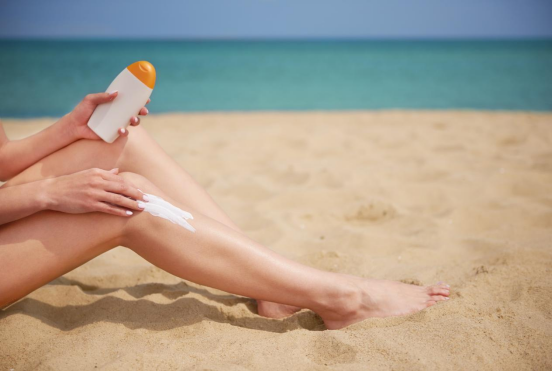
As consumers become progressively savvy about skin care, the dispute between chemical and physical sun blocks continues to be a warm topic. While both deal vital defense against the sunlight's unsafe ultraviolet (UV) rays, physical sun blocks are typically admired for their mild yet effective formula, making them a preferred option for those with delicate or reactive skin. The trick to their success lies in their energetic ingredients, which produce a physical obstacle on the skin to block out UV radiation. This post will explore the globe of physical sun blocks, concentrating on their essential components: zinc oxide and titanium dioxide.
Unlike their chemical equivalents, which soak up UV radiation and transform it into warm, physical sun blocks work by sitting on top of the skin to form a guard that disperses and spreads both UVA and UVB rays. This mechanism is why they are commonly referred to as "sunscreens." The primary advantage of this technique is its prompt performance upon application and the lower probability of triggering skin inflammation, as the components are not taken in right into the skin.
The most celebrated ingredient in the physical sunscreen family is Zinc Oxide. This giant mineral is special in its capacity to supply broad-spectrum defense, indicating it successfully secures the skin versus the complete spectrum of UVA and UVB rays. UVA rays are accountable for premature aging, including creases and great lines, while UVB rays are the main root cause of sunburn. By using extensive protection versus both, zinc oxide plays a critical function in stopping sun damages and minimizing the risk of skin cancer cells.
Additionally, zinc oxide is renowned for its calming residential or commercial properties. It has actually been utilized for centuries to treat small skin irritations, breakouts, and burns, a testament to its mild nature. This makes sunscreens created with zinc oxide an excellent choice for people with delicate skin, acne-prone skin, or conditions like rosacea and dermatitis. Its non-comedogenic properties additionally mean it is less likely to clog pores, a common issue for those with oily or mix skin.
The other key player in the physical sunscreen group is Titanium Dioxide. This normally occurring mineral is an additional exceptional active ingredient for creating a physical barrier versus UV rays. It is very reliable at reflecting and scattering UVB radiation, offering robust defense versus sunburn. While it supplies excellent protection across the UVB spectrum, it is typically thought about much less efficient versus long-wave UVA rays contrasted to zinc oxide.
For this reason, titanium dioxide is frequently utilized combined with zinc oxide in sun block solutions. This mix develops a collaborating result, improving the general broad-spectrum security of the product. By leveraging the strengths of both ingredients, formulators can create a sun block that uses thorough and reliable protection against the sun's destructive rays. Like zinc oxide, titanium dioxide is additionally mild on the skin and is a suitable alternative for those with delicate or quickly irritated physical sunscreen ingredients skin.
Recently, advancements in formulation technology have actually dealt with one of the first disadvantages of physical sunscreens: the thick, white cast they would certainly often leave on the skin. Modern formulas now make use of micronized or nano-sized bits of zinc oxide and titanium dioxide, which allows for a much more cosmetically stylish application without endangering their protective abilities. This means you can take pleasure in the mild, effective security of a physical sun block without the tell-tale white residue.
Finally, physical sunscreens use a trustworthy and mild way to secure your skin from the sunlight. Their star components, zinc oxide and titanium dioxide, operate in consistency to create a physical shield that deflects unsafe UVA and UVB rays. With their excellent security account and viability for all skin kinds, especially sensitive skin, physical sunscreens are a powerful force in the fight against sun damages. The following time you are Surf the sunscreen aisle, consider the powerful, protective, and skin-loving advantages of a physical solution.